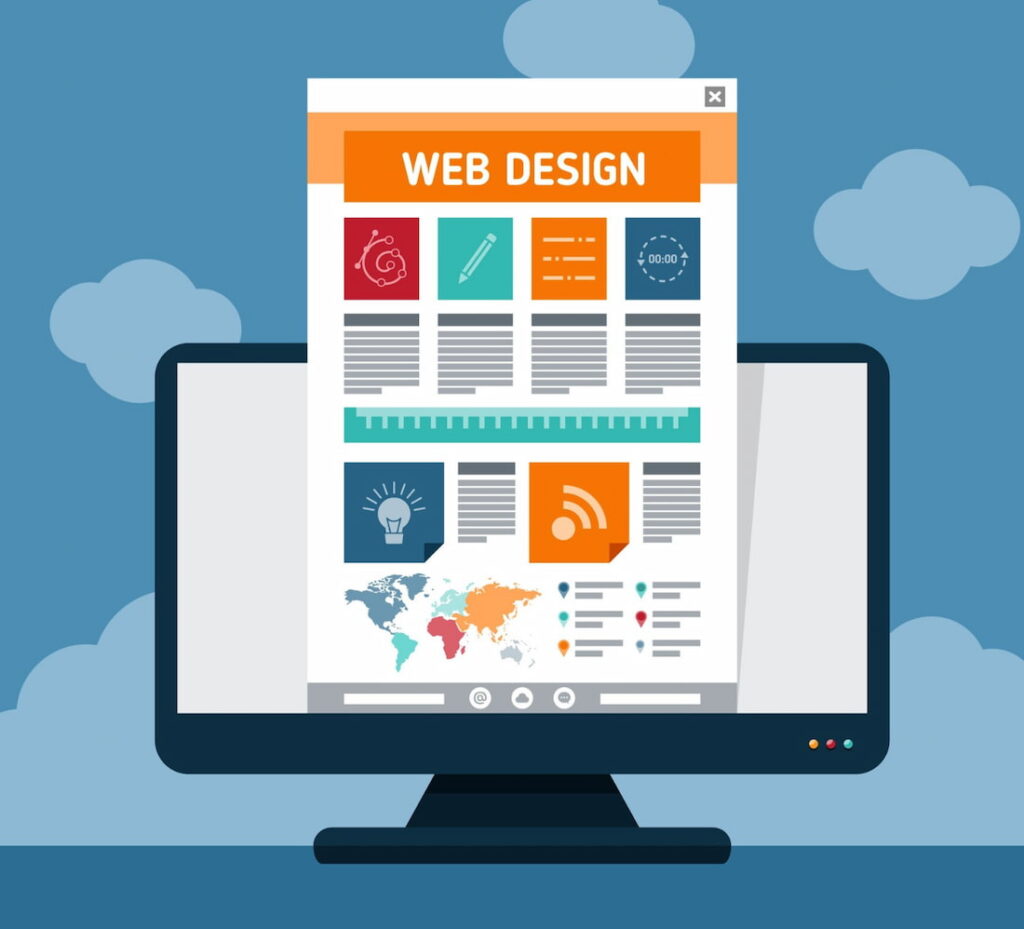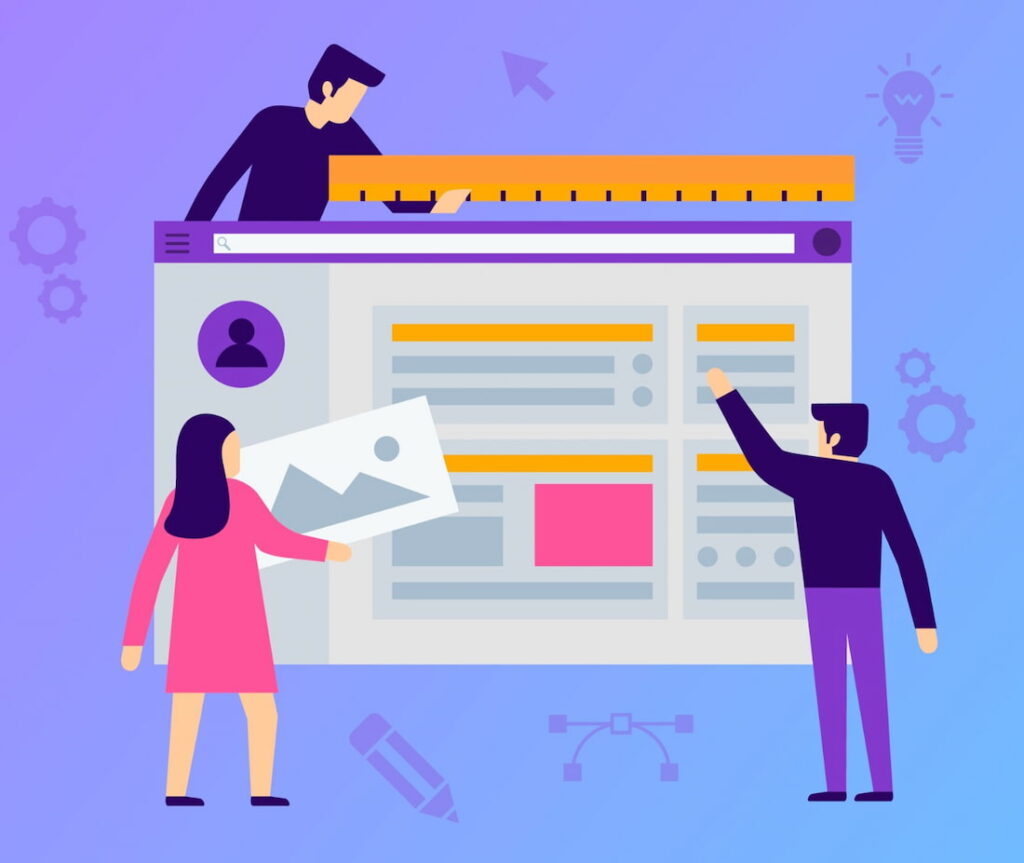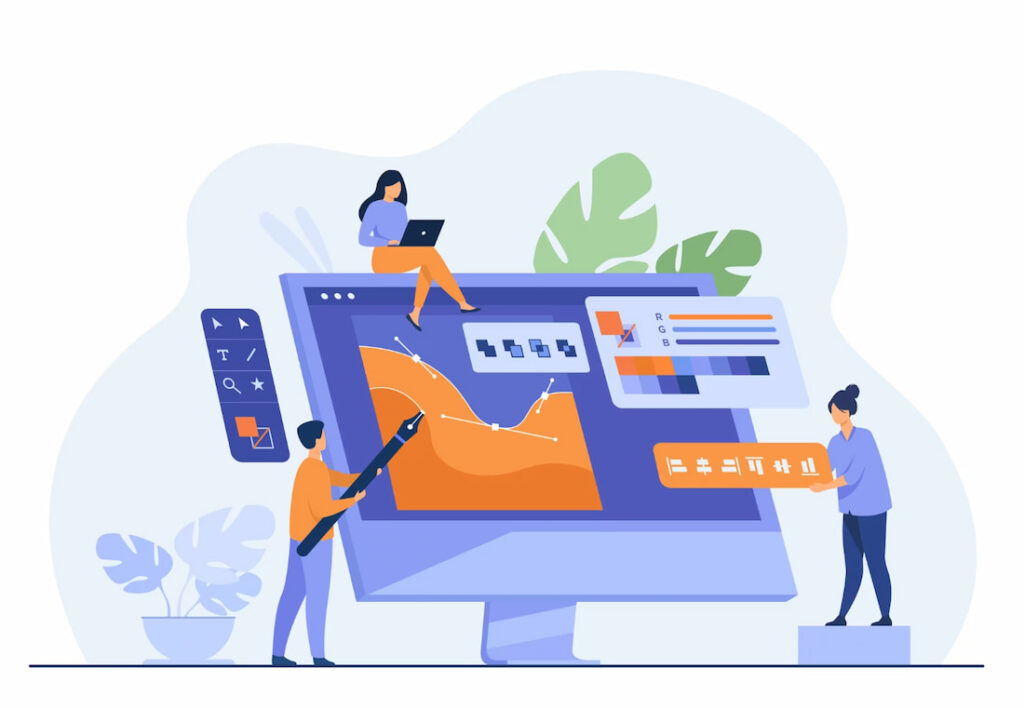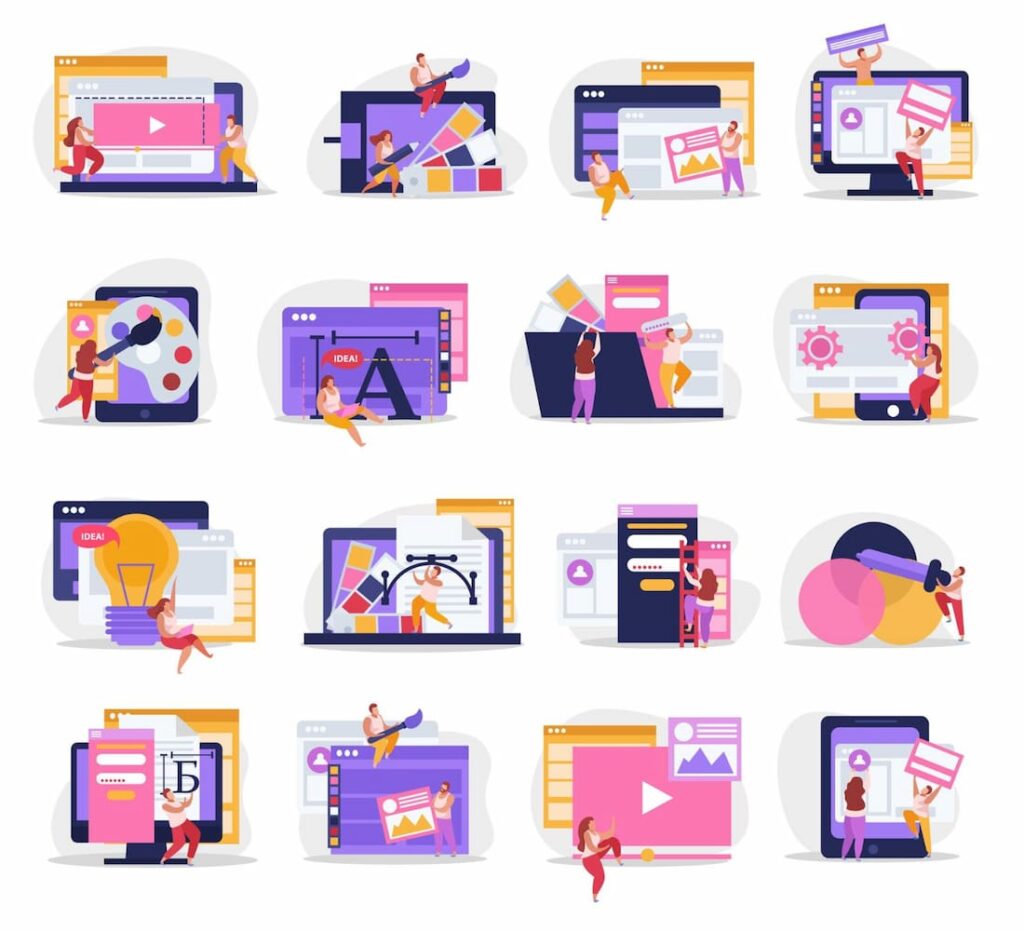Understanding the Essence of Web Design
Usually, the concept of web design is associated with creating a visually appealing site. However, in essence, it is a holistic approach that revolves around enhancing responsiveness, functionality, performance, and user experience. Seamless integration of several factors like navigation, color scheme, layout, and other interactive features are core of web design. An effective web design goes beyond surface-level aesthetics. Rather, it delves into psychology of user behavior and ensures a harmonious balance between form and function. To achieve the objective, a keen understanding of following elements is necessary:
- Goals and nature of the website
- Target audience
- Preferences of target audience
Key Elements of Effective Web Design
Color Schemes and Palettes
User experience and visual identity of a brand website can only be shaped through usage of relevant color schemes and palettes. These two factors are vital for establishing a website that can trigger emotional resonance, visual hierarchy, brand identity, and navigation.
Your color selection is critical to influencing emotional response of audience and their perception of the website. A deliberated color scheme is important for enhancing readability, accessibility, and experience for users.
Moreover, the distinction provided by your unique color scheme and palette is essential for making your website stand out among your competitors. Exceptional color selection contributes to creating your brand individuality.

Typography and Font Choices
Selection of appropriate fonts, size, line spacing, and other text-related factors is called typography. If you want to increase user experience of your site giving thought to typography is essential. This is because suitable typography helps you convey information in an engaging and clear manner. Key elements of typography are:
- Font Selection: Choosing right typeface font is pivotal in conveying the tone and style of your website. Common font styles include sans-serif, serif, and script.
- Font Size: This factor plays a crucial role in increasing readability of your headings, subheadings, and content.
- Spacing and Line Length: Both spacing between lines and their length are significant for ensuring readability. When it comes to line height or spacing, the optimal value revolves between 115%-150%. However several factors are a must to consider while selecting the spacing.
Layout and Grid Systems
For a well-structured and user-friendly system, layout and grid systems play a pivotal role. These elements are crucial for creating a visual hierarchy and organizing content. Here are the benefits of an effective layout and grid system:
- Layout determines how your content will be visible to your visitors.
- Grid system is best way to develop a visual hierarchy of your content.
- Grid system ensures consistency in your design contributing to a professional look and visual identity.
- This also increases responsiveness of your website.
- Grid-based layouts make your site visibility adaptable to all types of screens.
- Moreover, by using grids you can significantly augment the aesthetic appeal and beauty of your website.

Imagery and Visual Elements
In the beginning, websites just used to be blank pages filled with information only. However, those times are long gone. Today, without proper media, a website can never turn into a successful project. These two elements are pivotal in enhancing visual appeal, user experience, communication, and engagement of website.
Including images and other visual elements in your web design offers pleasing aesthetics to website. These are compulsory for attracting your target audience by increasing communication through visual storytelling. Moreover, CTA or call-to-action also depends on an attractive image, banner, or button.
Web Design Work Sizes
Standard Screen Resolutions
Making a website responsive to all kinds of devices depends on multiple factors and one of them is the standard screen resolutions. Usually a responsive design’s screen size revolves around the following elements:
- What objectives do you want to achieve through your website?
- What variety of devices is used by your specific target audience?
If your website screen resolution is not up-to-date with standard screen preferences you cannot expect it to perform well. To make your site more responsive for variable devices, the common methodology used is as follows:
- For the desktop version, a screen resolution of 1280×720 is regarded as the best
- For the mobile screen version, a screen resolution of 360×640-414×896 is considered suitable
- For the desktop version, a screen resolution of 601×962-1280×800 is deemed good
Responsive Design Principles
Following responsive web design principles ensure your site performs according to your goals and objectives. A website which is adaptive to a varying variety of devices is set to succeed in today’s digital atmosphere. Here are some of the commonly applied principles for a responsive web design:
- Consider a mobile-first approach before opting for larger screens.
- Do never ignore visual hierarchy while designing your website.
- Prioritize fluidity in grids and flexibility in images.
- Choose a suitable typography.
- Set your sight on relative units for variables like different screens, pixel density, and others.

The above principles are instrumental in ensuring a responsive web design for your project.
Mobile-Friendly Web Design
Today, most visitors use mobile phones to visit a website. That is where mobile-friendly web design comes to play its role. A mobile-centered approach offers the following benefits:
- It is significant for driving more traffic due to an increasing number of mobile users.
- Google and other search engines prefer mobile-friendly websites for ranking.
- A mobile-first approach helps enhance UX of your website.
- It lessens the bounce rate and offers broader accessibility.
- By designing experts it is particularly mandatory for eCommerce sites to augment the conversion rate.
Web Design Font Size Guide
The Significance of Font Sizes
There are several crucial parts of web designing and one of these is selection of right font size. Consider a site with an extra-large font size. It will not only leave a negative impact on your visitors but also make your site more cluttered and disoriented. On other hand, if a site uses too small fonts, users will find it difficult to absorb the content leading to a decrease in UX. Therefore, you must be careful while selecting an appropriate font size for your web design.

Choosing the Right Font Size
Adopting a not-too-small and not-too-big font size approach is best strategy if you want to ensure readability and comfort for all users. Some of the appropriate recommended font sizes for various screens are:
- 12-16pt for mobile screens
- 15-19pt for tablets
- 16-20pt for desktops
Implementing above approach will enable you to come up with a highly responsive web design in terms of content readability.
Best Practices for Font Sizing
Some best practices for font sizing in web design are:
- Emphasize relative units such as rem or em.
- Avoid using absolute units, for instance pixels.
- Use different font sizes for body text, headings and subheadings to craft a visual hierarchy.
- Prioritize readability and clarity.
- Follow the recommended sizes for various devices.
Interested in further discussion? Check out this video about web design principles, with examples: KEY Web Design Principles: Navigation, Hierarchy & Color
Web Design and SEO
Online success of a website depends on the symbiotic relationship between web design and SEO. An effective web design not only enhances user experience but also optimizes your site for search engines. Different factors like mobile-friendly approach, navigation, readability, clarity, and responsiveness play a vital role in improving SEO performance of site. Additionally, visual elements like images also have a significant say in optimizing your project.
Conclusion
Wrapping this up, your web design plays a vital role in making your site a big success. From font style to font size and media content everything is pivotal. Elements like easy navigation, responsiveness and effective layout not only augment your site’s visual appeal and adaptability but also optimize it for search engines like Google. Therefore considering abovementioned practices is critical while designing your site.
FAQs
How can I make my website design stand out?
Employ recommended web design principles to make your website design stand out by focusing on unique color schemes high-quality images and creative layouts. Use typography effectively to create visual interest and personality.
What is the ideal font size for body text in web design?
16px is the ideal size for body text in web design as it strikes good balance between readability and efficient use of space. This size is generally comfortable for most readers on different devices and screens.
Why is responsive design crucial for web success?
Responsive design is important for ensuring your site’s adaptability to different types of screens like smartphones tablets and desktops. This flexibility enhances user experience as it allows your site to be easily accessed and navigated on any device.
How can web design impact my website's search engine ranking?
Different web design factors like responsiveness navigation and clarity enhance your site’s SEO performance by making it more user-friendly and accessible. Search engines favor websites that provide good user experience which includes fast loading times clean design and easy navigation.
What tools can help me with web design work sizes and fonts?
Tools like Fontjoy, Google Fonts, and Adobe XD can help you with web design work sizes and fonts. However, among all these options Google Fonts are considered a recommended option for sizes and fonts in terms of performance, but it also depends on your designing approach and what you are trying to achieve.
